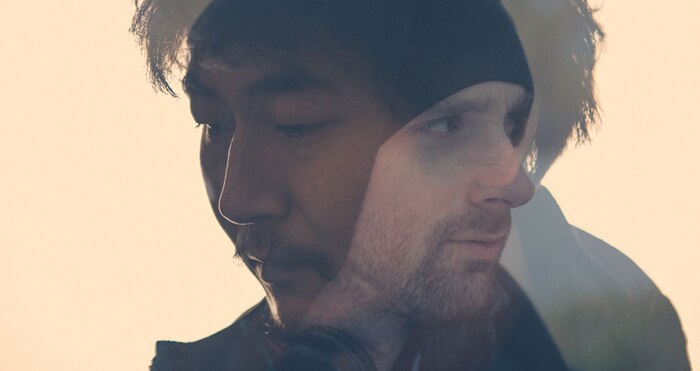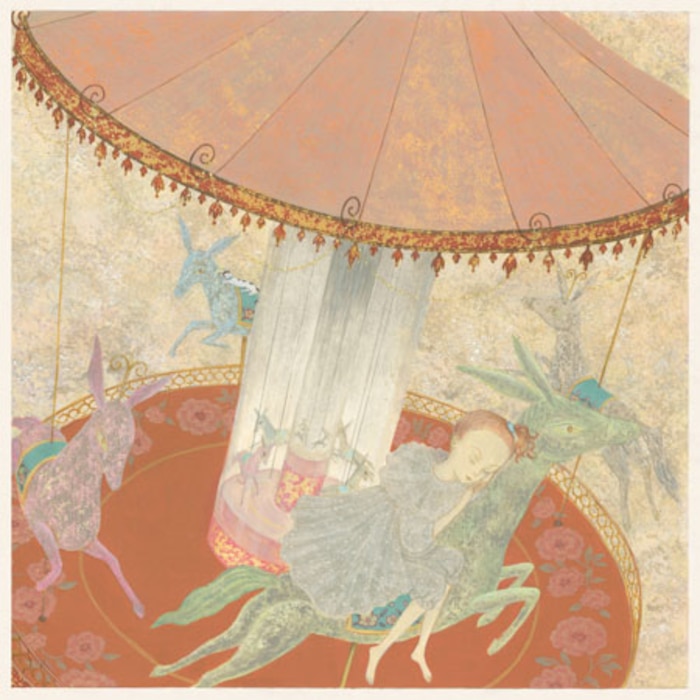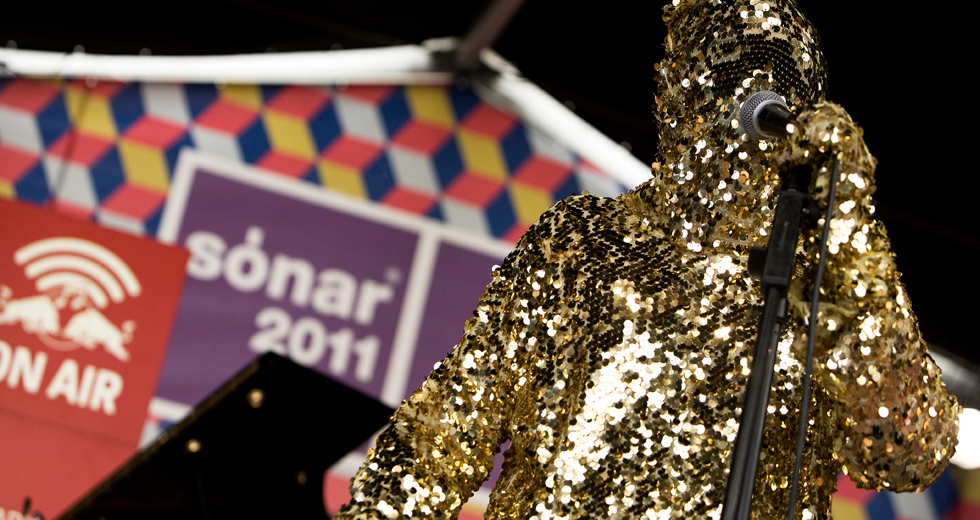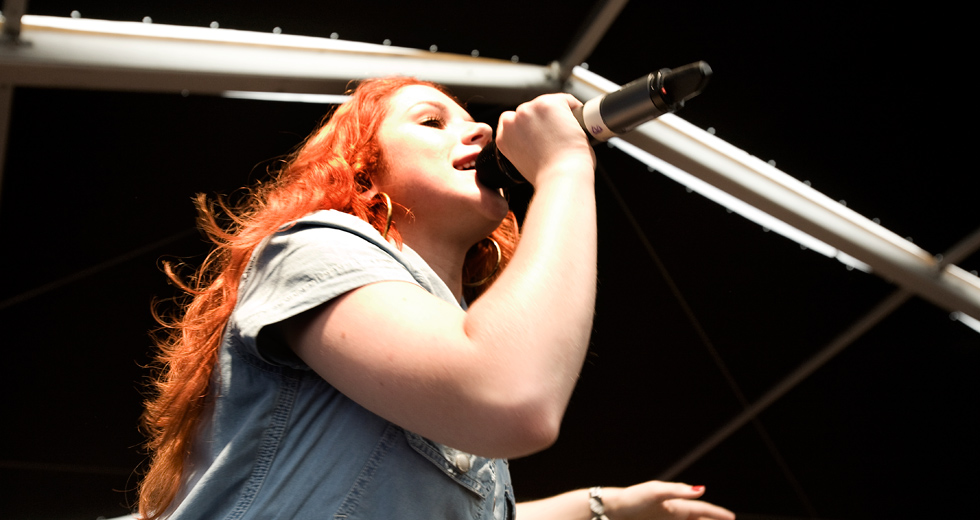Toy Story: An Interview With Kidsuke
England’s Kidkanevil and Japan’s Daisuke Tanabe first met as participants of the London 2010 edition of Red Bull Music Academy. Following that experience, the pair joined forces to create the Kidsuke project. Their charming new album marries the lightness of childhood and the insistence of rhythm with clever electronic wizardry, and is out now via Project Mooncircle. Florian Obkircher caught up with them during their recent European tour to find out the details of their cross-continental collaboration. You can also download their track “Toy Jam & Earl” from its embed below and listen to their recent live set in London via RBMA Radio.

KIDKANEVIL: I’d known Daisuke’s music, I’ve been a fan of it for a while. And then we really clicked when we met, musically and everything. It was at Red Bull Music Academy where we initially started talking about the idea of doing something together.
DAISUKE TANABE: You asked me to do a remix.
KIDKANEVIL: Oh yeah, I asked Daisuke to do a remix for me. That was the first starting point. And then Cherry Chan who was also on RBMA invited us over to Singapore to play her Syndicate night. So, we played there and then I went to Japan for a bit after that, and that’s when we started talking about doing an album.
“I thought it was quite a good idea to combine those kind of elements and create one person, like half Japanese, half English: Kidsuke.”
RBMA: How did that first idea develop into making a collaborative album?
DAISUKE TANABE: We were talking about an EP.
KIDKANEVIL: Initially, yes. Then were just like, let’s do a whole project, do a whole album. Because the vibe was so good, it made sense to turn it into a whole album. And then Daisuke was in Europe for some shows and he came over to mine for a day. I’ve been collecting loads of children’s toys and children’s musical instruments, and we put them all out in the room and put a microphone in the middle of the room and then we jammed on all these kids’ toys for a whole day, I got hours of it. And that was the basis for most of the album.
DAISUKE TANABE: And we also went to your friend’s studio and played some piano.
KIDKANEVIL: Oh yeah! My friend Gillian Wood who is a really amazing cello player and piano player, she plays some parts on the album. I used to live with those guys, Gillian and Robert, who is a sound engineer, but he also collects vintage synthesizers. So, we spent a day there as well, just recording mad stuff and Gillian played loads of piano parts. And then we just took all that footage away with us and started bouncing it back and forth via email pretty much.
RBMA: Did you have a concept before you started working on the record?
DAISUKE TANABE: We didn’t really talk about a concept. We just wanted to have fun.
KIDKANEVIL: I think it just started to sound how it sounds. There’s what we both do, and there’s quite a lot of common ground musically between the two of us. Maybe [we tried to] emphasise that common ground a little bit.
DAISUKE TANABE: I think you are a big fan of Japanese music. I used to live in London, so I’m a big fan of UK bass music but I can’t really make proper UK bass music. I thought it was quite a good idea to combine them.
KIDKANEVIL: Those kind of elements, yeah…
DAISUKE TANABE: … and create one person, like half Japanese, half English: Kidsuke.
RBMA: Would you say that the elements each of you brought to the table are distinguishable on the album?
KIDKANEVIL: For quite a few of the tracks it was almost like we were doing impressions of each other. I was making Daisuke-style chime parts. Daisuke was doing some quite hard beats. And then about half way through we started [to do] more of our own end of the spectrum, too.
DAISUKE TANABE: It was a really good balance.
KIDKANEVIL: The album is probably pretty much an exact 50/50 split if you broke it all down. Daisuke is really strong on melody, I think he took the lead on quite a lot of the melody parts, maybe I was messing with the drums a bit more, but it’s quite an even split.
RBMA: The album sounds very cohesive due to chimes and all the bell sounds.
KIDKANEVIL: A lot of that comes from the session we did at my house. Just recording loads of sounds to take away and start messing around with. I think we’re drawn to similar taste in sounds maybe?
DAISUKE TANABE: Yeah, I think so.
RBMA: Do you collect music boxes and children’s instruments?
KIDKANEVIL: Yeah, both of us.
DAISUKE TANABE: We also bought some toys in charity shops.
KIDKANEVIL: Oh yeah, when Daisuke came over we went around a bunch of charity shops and bought loads of random toys and things to hit.
RBMA: What was the most effective purchase?
KIDKANEVIL: I got a good alphabet thing, you can type the alphabet – we used that thing loads. It makes such a cool click sound. We got loads of things. That rubber chicken we used a lot, a squeaky chicken.
RBMA: So, all the chime sounds on the record come from real music boxes?
KIDKANEVIL: Yeah, there are not many samples on the album. It’s mostly played live or chopped up.
RBMA: When I heard the album for the first time I thought it’d be the perfect music for a Japanese candy shop.
KIDKANEVIL: Oh yeah? I vaguely thought about anime films. I think it was a bit like making our own anime soundtrack.
RBMA: Daisuke, did you have an image in mind when you were working on this record?
DAISUKE TANABE: For me, making music is just a thing. I clear my mind, I don’t really think too much when I’m working. But I think we got a common visual. We don’t really talk much, but I think we have a similar vision.
RBMA: How do you communicate in the studio then?
DAISUKE TANABE: We talk, but we don’t really think about concepts and stuff.
KIDKANEVIL: Just doing music, yeah. We can maybe mention the artist who did the cover?
DAISUKE TANABE: Yeah. The album cover was done by Yura Komine. We were researching on the internet quite a lot and accidentally I found an artist called Yura Komine, she’s a Japanese artist, she’s normally making pictures for kids and so I asked her to make the Kidsuke artwork.

RBMA: The kid’s voice that you can hear on tracks like “Tiny Concrete Block” or “The Other Day We Thought Of Our Friends”, who is that?
DAISUKE TANABE: That’s my niece.
KIDKANEVIL: Daisuke sent me the audio, he’s like ‘I recorded my niece’.
DAISUKE TANABE: That was basically for DJing.
KIDKANEVIL: Yeah, maybe for the live set. And I was like, this is literally the coolest piece of audio I’ve ever heard. But there’s more of it! If we make another album, we need to use more. There’s one of her singing “The Tomato Song”. I actually tried to find a place for that on the album but I couldn’t quite squeeze it in. “The Tomato Song” is quite amazing.
RBMA: Some of the tracks bring the music of Japanese electronica masters such as Nobukazu Takemura or Kazumasa Hashimoto to mind. And I was wondering, do you see your record in a tradition of their playful music?
KIDKANEVIL: I think so. There’s definitely a history of that in Japanese electronic music. I think music in Europe and in the States is sometimes, not always, but sometimes quite aggressive, maybe even quite arrogant. And I think music in Japan and in Asia in general is often a bit more playful. Even classic stuff like Yellow Magic Orchestra has that kind of quality to it. I love all that music and then, obviously, Daisuke is in that tradition naturally.
RBMA: Where do you think that soft spot for playful elements in Japanese electronic music comes from, Daisuke?
DAISUKE TANABE: I think it’s based on the Japanese mind. Some Japanese [musicians] get inside the mind, not really expressive. I don’t know why. It’s like a natural thing, I guess.
KIDKANEVIL: I think you can see it on quite a lot of levels of the culture, right? With anime and manga stuff, a lot of that has that element to it, too. Even just walking around in Japan, people can be quite shy or polite.
DAISUKE TANABE: You can see that, but I don’t because I’m Japanese.
KIDKANEVIL: Yeah, you’re used to it. I definitely see it compared to London.
RBMA: One of you lives in the UK, the other one in Japan. That’s quite a distance. How did the collaboration work?
DAISUKE TANABE: We sent a lot of files via email. Also, we Skyped a lot.
KIDKANEVIL: Often one of us would start the idea and send it to the other person. Then they’d kind of almost finish it off and send it back, and then add more things to it. Just keep bouncing tracks back and forth until we felt like they were finished.
“To be able to collaborate and still be in your own personal space is great.”
RBMA: Is that the best method to work together for you guys?
KIDKANEVIL: It would definitely be nice to do more sessions together in the studio. But at the same time, growing up with that bedroom producer mentality is an introverted thing, it’s nice to work on your own. So, to be able to collaborate and still be in your own personal space is great. Sometimes when I work on other projects I find it difficult, because the music almost doesn’t quite click with my personal space or whatever. It almost feels intrusive. It can be difficult sometimes. But with Daisuke it just felt really comfortable, really natural. Being in the studio together is really fun, and really crazy ideas would come out of that. But then in terms of really sinking into the vibes of the particular pieces of music, it’s nice to be in our own spot and then just send things back and forth and give each other space to do our own thing as well.
DAISUKE TANABE: It’s like shaking hands. [Daisuke’s more gesturing here, but what he’s trying to say is that you can’t really shake hands if one uses the right hand and the other uses the left.] Some collaborations are like that. But we both used our right hand.
KIDKANEVIL: That’s such a zen answer!
RBMA: You feature the RBMA alumni Cherry Chan and Myele Manzanza on the track “SGstep”. How did that come about?
KIDKANEVIL: We actually recorded the Cherry Chan hook and Myele’s percussion parts here at Red Bull. That was almost on the first day here. We just got loads of pots and pans and I got Myele to play loads of beats and I recorded them and made a beat.
Illum Sphere technically wrote the lyrics to that ‘bounce bounce’ thing. We were just trying to think of the goofiest hood rap thing that we could that wasn’t too x-rated, and then got Cherry to rap. She wasn’t entirely convinced it was a good idea, but we managed to get her to do it. But that was actually done on the first day of the Academy, and I had that beat in the loop for a while but I could never get the music to be satisfying enough.
And then when we were in Singapore with Cherry we were waiting by the traffic lights and it suddenly made the craziest sound. Singapore traffic lights make these mad laser sounds and Daisuke had his recorder on him. We just waited at a traffic light and recorded that. And then Daisuke made a crazy beat out of the Singapore sounds. And then we ended up combining those two and that’s what ended up as that track.
RBMA: On another track May Roosevelt plays the theremin.
DAISUKE TANABE: I participated with May Roosevelt in the Academy and I really loved her instrument, the theremin. She’s really good at playing it. We did a collaboration at the Academy which ended up on the Various Assets compilation. After the Academy, we sent our beats to May and then she played some theremin parts.
KIDKANEVIL: That was a completely different beat initially, right?
DAISUKE TANABE: Yeah.
KIDKANEVIL: We should finish that one. There are loads of ideas, man. I think we made maybe 60 tracks. We need to finish them off. A lot of them, we wanted to finish them, but they were just so crazy, we couldn’t figure out a way to get them finished. A lot of the ones that ended up on the album were just the ones that we could figure out how to end.
RBMA: Is it easier to finish off a track when you work with a partner?
KIDKANEVIL: I’d say it’s a lot easier because when you work on your own you sometimes get to that point where everything is flowing really nice and you can hit a wall, like, you’re not quite sure how the arrangement should finish or you can’t get a particular chord or melody to be satisfying. But then with this collaboration, when you get to that point you can just send it over to the next person. And to them it’s fresh and exciting and they have a lot of ideas to finish it off. It keeps things rolling. I think that’s why in a lot of commercial pop studios, like all the US rap producers, they always have a lot of engineers and musicians that they work with. And it means that they, again, it’s a way of getting over that hump so you can keep your workflow really efficient and fast.
DAISUKE TANABE: Sometimes you can see the collaboration piece as someone’s piece. If it’s a collaboration, we can keep the good distance to it because it’s not too much of yourself.
KIDKANEVIL: You can step back a little bit, it helps it flow again, yeah.
Title image of Kidsuke by Dan Medhurst. The Kidsuke LP and the Daisuke/Jealousguy split 7" are available now.

